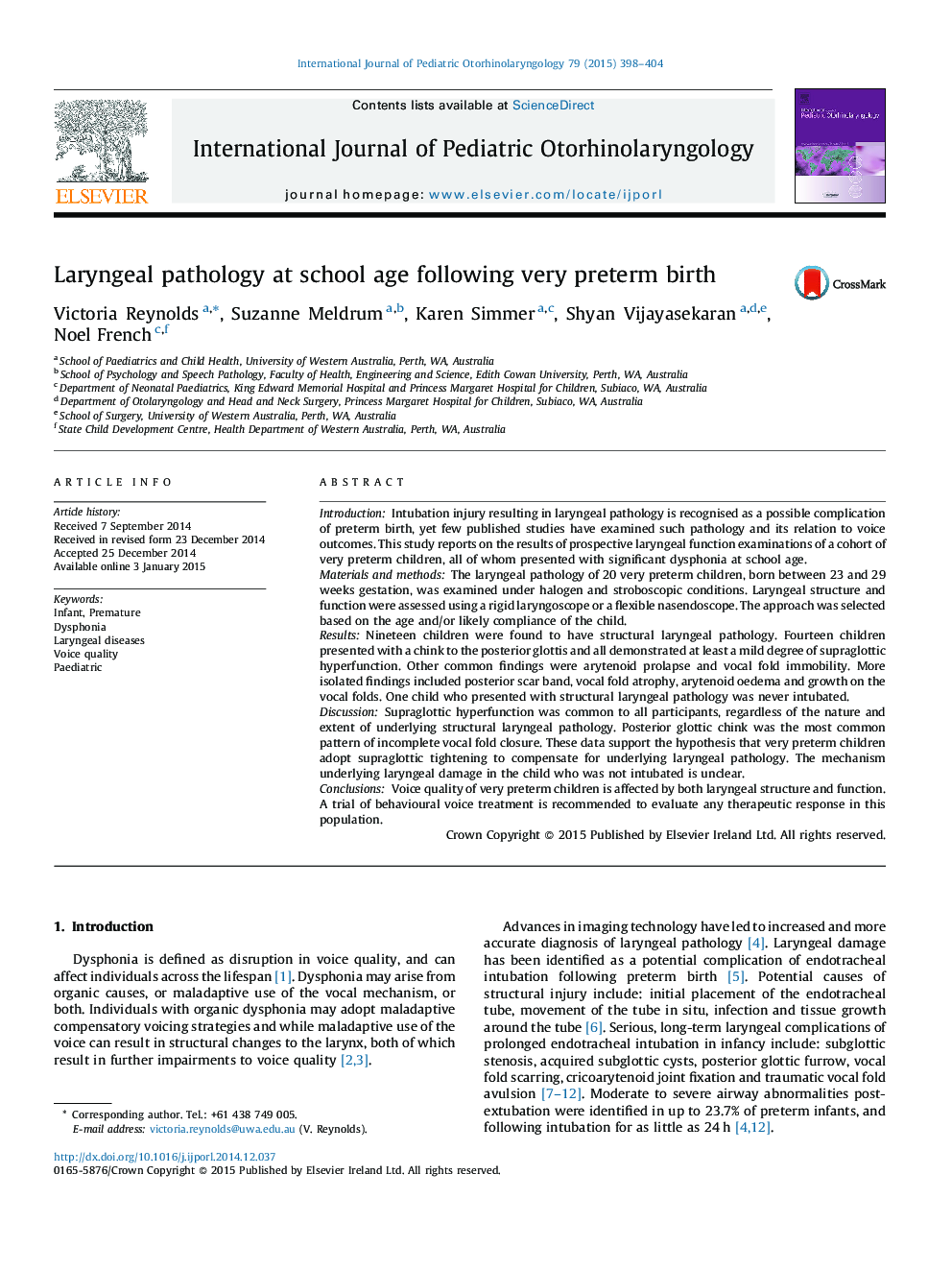| Article ID | Journal | Published Year | Pages | File Type |
|---|---|---|---|---|
| 4111977 | International Journal of Pediatric Otorhinolaryngology | 2015 | 7 Pages |
IntroductionIntubation injury resulting in laryngeal pathology is recognised as a possible complication of preterm birth, yet few published studies have examined such pathology and its relation to voice outcomes. This study reports on the results of prospective laryngeal function examinations of a cohort of very preterm children, all of whom presented with significant dysphonia at school age.Materials and methodsThe laryngeal pathology of 20 very preterm children, born between 23 and 29 weeks gestation, was examined under halogen and stroboscopic conditions. Laryngeal structure and function were assessed using a rigid laryngoscope or a flexible nasendoscope. The approach was selected based on the age and/or likely compliance of the child.ResultsNineteen children were found to have structural laryngeal pathology. Fourteen children presented with a chink to the posterior glottis and all demonstrated at least a mild degree of supraglottic hyperfunction. Other common findings were arytenoid prolapse and vocal fold immobility. More isolated findings included posterior scar band, vocal fold atrophy, arytenoid oedema and growth on the vocal folds. One child who presented with structural laryngeal pathology was never intubated.DiscussionSupraglottic hyperfunction was common to all participants, regardless of the nature and extent of underlying structural laryngeal pathology. Posterior glottic chink was the most common pattern of incomplete vocal fold closure. These data support the hypothesis that very preterm children adopt supraglottic tightening to compensate for underlying laryngeal pathology. The mechanism underlying laryngeal damage in the child who was not intubated is unclear.ConclusionsVoice quality of very preterm children is affected by both laryngeal structure and function. A trial of behavioural voice treatment is recommended to evaluate any therapeutic response in this population.
